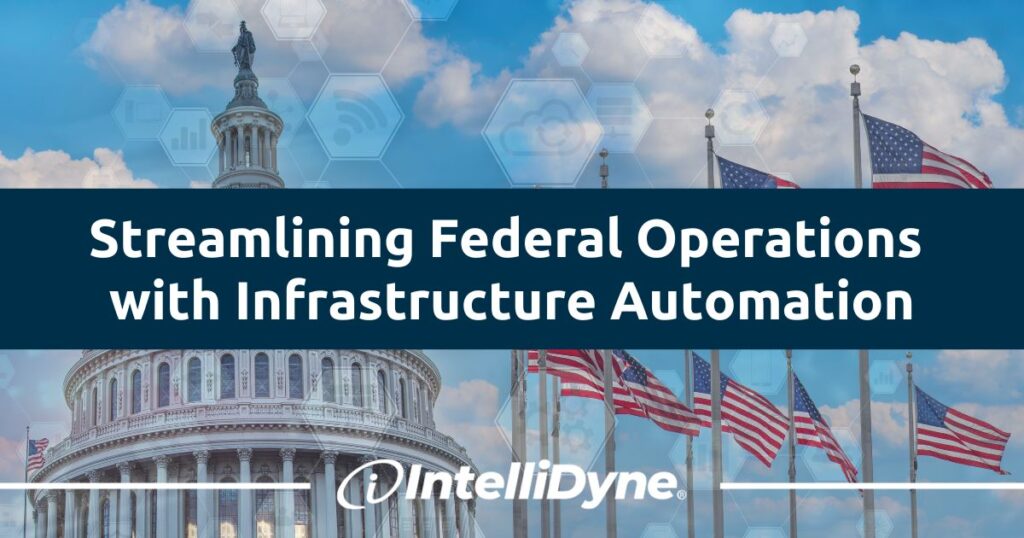Adoption of automation within public services is one of the top trends transforming the federal government, according to Forbes. In fact, Gartner predicts that by 2025, 70 percent of organizations will implement infrastructure automation despite the lack of specialized skills required to support it within hybrid and multi-cloud platforms.
There’s no denying that the need for enterprise automation solutions to help manage today’s complex IT environments is growing as organizations move from ad hoc automation of specific tasks to end-to-end process automation. But how do already overburdened IT organizations keep pace with the scale and diversity of technologies they must support without increasing spending and headcount, especially in government agencies?
The Value of Infrastructure Automation
Infrastructure automation combines innovation with efficiency, improving speed and system performance and reducing human error in the movement of large amounts of data. With infrastructure automation, agencies can move away from manual configurations, enabling departments across government agencies to optimize IT spending and benefit from increased reliability, security, scalability, and more.
By reducing the manual effort in managing workloads, IT automation not only enables you to move faster and become more responsive, but it maximizes your resources and gives you a competitive edge in the ever-evolving hybrid and multi-cloud market. However, federal agencies often struggle with how to effectively implement infrastructure automation and unlock its potential without compromising security or efficiency.
Readiness for Infrastructure Automation
No matter where you are in your automation journey, a strategic partner can go a long way toward establishing a foundation for success, helping you put the right processes and tools in place and evaluating your current progress. IntelliDyne empowers the federal workforce by providing a guiding framework for the implementation of artificial intelligence, analytics, agile processes, and automated solutions to streamline work and reduce costs. Drawing on experience from past implementations, a partner like IntelliDyne will evaluate your organization’s readiness and identify the best scenarios for automation.
1) Automation Evaluation
- Culture and likelihood of adoption: Are automation and the agile processes that support it already in place? Where are the pain points? Who are the laggards?
- Organization of teams: Are teams siloed across departments and working independently, or are teams collaborating effectively? Where are gaps in skill sets that will need to be filled through training or resourcing?
- Maturity of agile processes: Is automation ad hoc or tied to a particular technology stack? Where are the successes that can leveraged?
2) Automation Audit
Determining where to get started with infrastructure automation can seem daunting. Your strategic partner will review your workflows, looking for certain, often overlapping, characteristics.
- Required workflows: Comprised of seemingly small, tedious tasks that interrupt and disrupt workflow, taking attention away from core work.
- Broad, common workflows: Tasks performed across departments by a lot of people, often repetitive and capable of being defined by a standard set of steps.
- Reliable, nonchanging workflows: Usually in support of infrastructure that doesn’t change frequently.
3) Automation Tools & Roadmap
Your strategic partner can help you select the right IT infrastructure automation tools. IntelliDyne works hand in hand with Resolve, an industry leader in IT process automation, to provide a platform for automation, orchestration, and policy standardization. Automation tools like Resolve help overcome technical skills gaps and optimize budgets to ensure successful implementation, measurable results, and ability to scale.
Properly executed, infrastructure automation can lead to higher productivity, better results, and significant improvements in federal government operations. With a comprehensive roadmap of objectives and tools designed specifically to meet the unique needs of your organization, you can maximize effectiveness while avoiding unexpected setbacks in your infrastructure automation journey.

